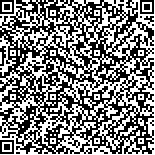本文已被:浏览 1572次 下载 2414次
Received:July 19, 2014 Revised:September 09, 2014
Received:July 19, 2014 Revised:September 09, 2014
中文摘要: 需求变更不可控, 需求变更常对软件开发产生严重影响, 需求变更管理是控制影响的直接途径. 为易于理解沟通, 基于资源、组织与业务的需求模型(简称ROB)用递归分解的方法分别从资源、组织与业务抽取需求, ROB全局统一的树形结构便于形式化定义需求对象以实现在计算机中存储和管理; 在规范需求变更管理组织、流程基础上, 建立数据模型, 设计数据操纵语言定义操纵接口, 通过编辑修改对象模拟需求发生变更, 在完整性、一致性规则约束下, 自动完成由需求变更引发的完整操作模块. 实践中应用ROB需求管理软件进行需求变更管理验证这种方法的有效性、自动化智能化等特点.
Abstract:Changes of software requirement are uncontrollable. Requirement change and its chain reactions are the most influential risk factor for the project quality during any stages of software development. Automatical requirement management can minimize the negative impact of requirements change. Automaticity of requirement change management relies on formal level and degree of standardization. Based on ideas of recursion and decomposition, this paper analyzes the requirement analysis method, referred to ROB. ROB is closer to reality. ROB is easily understandable and acceptable. ROB is a requirements modeling approach based resource, organization and business. It makes an improvement on management processes and management organization, designs the storage model by formalizing the requirement as a tree. It achieves the automatical and intelligent requirement change management by modify the tree under certain rules and constraints. In practical applications, the effectiveness of our approach has been indicated with a software tool.
keywords: software requirement modeling requirement management requirement change requirement review requirement track requirement change control capability maturity model integration(CMMI)
文章编号: 中图分类号: 文献标志码:
基金项目:国家自然科学基金(61300007);软件开发环境国家重点实验室基金(SKLSDE-2012ZX–28, SKLSDE-2013ZX-11)
引用文本:
郭新峰,马世龙,吕江花,武俊生,邵回祖.需求变更自动化管理模型与实现.计算机系统应用,2015,24(4):11-18
GUO Xin-Feng,MA Shi-Long,LV Jiang-Hua,WU Jun-Sheng,SHAO Hui-Zu.Implementation of Automated Management Model for Requirement Change.COMPUTER SYSTEMS APPLICATIONS,2015,24(4):11-18
郭新峰,马世龙,吕江花,武俊生,邵回祖.需求变更自动化管理模型与实现.计算机系统应用,2015,24(4):11-18
GUO Xin-Feng,MA Shi-Long,LV Jiang-Hua,WU Jun-Sheng,SHAO Hui-Zu.Implementation of Automated Management Model for Requirement Change.COMPUTER SYSTEMS APPLICATIONS,2015,24(4):11-18


